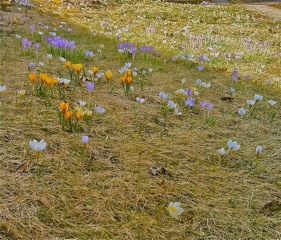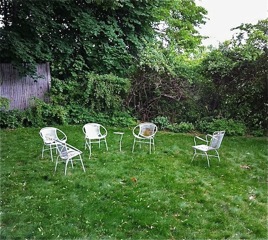Get Water-wise with Thomas Christopher
Posted in Adult Education, Around the Garden, Gardening Tips, Learning Experiences on March 6 2012, by Joyce Newman
Meet Thomas Christopher, an expert on sustainable gardening practices, who will speak about “The Backyard Revolution” Thursday, March 15, 10 a.m. to 12 p.m.
 Thomas Christopher has been covering sustainable gardening practices as a writer and editor for more than 25 years, with articles in nationally-read publications including The New York Times and Martha Stewart Living. He is also a hands-on gardener who has started his own sustainable lawn consulting business, Greener Grasses/Sustainable Lawns, near Middletown, CT.
Thomas Christopher has been covering sustainable gardening practices as a writer and editor for more than 25 years, with articles in nationally-read publications including The New York Times and Martha Stewart Living. He is also a hands-on gardener who has started his own sustainable lawn consulting business, Greener Grasses/Sustainable Lawns, near Middletown, CT.
“I was staggered to learn the area of turf in the United States is as big as Virginia, Connecticut and two-thirds of Rhode Island. Grass is our largest irrigated crop, more than corn,” said Christopher in a recent Chicago Tribune article. “Grasses are a resource-soaking nightmare, but they don’t have to be.”
In fact, a typical family of four can use more than 50 gallons of water per day on lawns and gardens alone. Nationwide, landscape irrigation is estimated to account for about 30% of all residential water use, equal to more than seven billion gallons per day.

Fortunately, we can greatly reduce the amount of water we use outdoors–by as much as 20 to 50%, says the EPA. The key is to change “to a water-efficient landscape through proper choice of plants and careful design.”
For his own front lawn in Connecticut, Christopher is encouraging the growth of a fine fescue turf–a type of grass (Festuca rubra) with cultivars that have been bred for turf. He is overseeding, and halting the fertilization and irrigation that supported other types of grasses. “I particularly like that you can interplant the fine fescue grasses with early spring bulbs,” he says. “The bulbs bloom and go dormant before the first mowing of the year so that they perform as perennials, returning year after year and even proliferating.”

Christopher points out that this type of turf requires mowing only three to four times a year, and needs little or no fertilization and no summertime watering. “Once established, the grasses are also naturally weed-resistant (allelopathic) and, depending on the cultivar and the seed source, they may host endophytic fungi, which makes [the grasses] naturally insect-resistant as well.”
Christopher recently edited The New American Landscape: Leading Voices on the Future of Sustainable Gardening, which contains his own chapter on water-wise gardening and is regarded by many as one of the best gardening books of 2011.
You can register for Thomas Christopher’s lecture online, or call 800-322-6924. The annual Winter Lecture Series, now in its twelfth year, is hosted by the NYBG’s School of Professional Horticulture and Adult Education.

